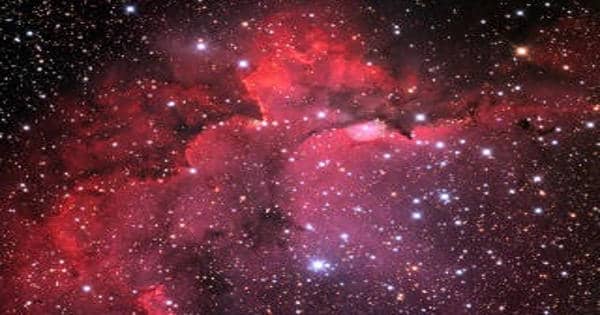U Lacertae is a very luminous Supergiant Star-type star. It is a binary star located in the Lacerta constellation. It is an M4IAB + B supergiant star based on the spectral type that was recorded in the Hipparcos star catalogue. The main star is a red supergiant 1,022 times larger than our Sun. U Lacertae estimated radius has been calculated as being 53,710.63 times bigger than the Sun.
Despite being in the constellation of Lacerta, U Lacertae is considered to be a member of the Cepheus OB1 association. Lacerta constellation lies in the northern sky, between Andromeda and Cygnus. Lacerta was created by the Polish astronomer Johannes Hevelius in 1687. It is not part of the Lacerta constellation outline but is within the borders of the constellation. It has been listed as a member of the open cluster ASCC 123. The star can not be seen by the naked eye, you need a telescope to see it.

U Lacertae is a VV Cephei binary consisting of a red supergiant and a small hot companion. The location of the supergiant star in the night sky is determined by the Right Ascension (R.A.) and Declination (Dec.), these are equivalent to the Longitude and Latitude on the Earth. The companion has been identified from a high excitation component in the spectrum and from radial velocity variations, but the orbit is unknown. The Right Ascension is how far expressed in time (hh:mm:ss) the star is along the celestial equator. If the R.A. is positive then it’s eastwards. The Declination is how far north or south the object is compared to the celestial equator and is expressed in degrees. For U Lacertae, the location is 22h 47m 43.43 and +55° 09` 30.3.
U Lacertae is a variable star classified as a semiregular variable. Based on the star’s spectral type of M4Iab + B, U Lacertae’s color and type is red supergiant star. The periodicity is uncertain but the main period of 150 days and a long secondary period of 550 – 690 days have been suggested. A study of Hipparcos satellite photometry found an amplitude of 0.77 magnitudes and found no periodicity. The General Catalogue of Variable Stars lists an amplitude of 2.7 magnitudes.
U Lacertae has an apparent magnitude of 8.34 which is how bright we see the star from Earth. Water masers have been detected around U Lacertae, common in the extended atmospheres of very luminous cool stars.
Information Source:
















